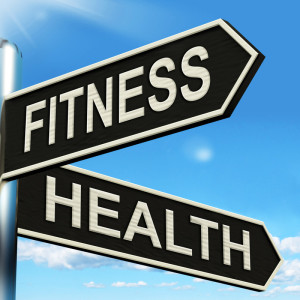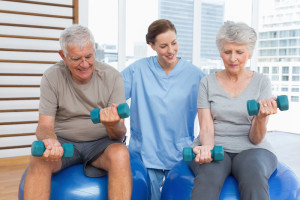Today, age and ageing has a whole new meaning……
……we all want to look better, live longer and enjoy life to the fullest; right up to our last day.
But there once was a time when conventional wisdom dictated that sport was the preserve of the young, and that older people would never be able to build muscle, get stronger, improve their flexibility or participate in vigorous activities, let alone extreme sports.

Well that little gem of wisdom is certainly becoming a myth as Harvard University studies have proven older people can indeed get fit and perform very well even at intense sporting activities. Myself, and many others my age (closer to 70 than 60) are living proof of that.
Exercise and aging go hand in hand
Regular exercise is an essential activity for people who are over the age of 50 (although I believe it is essential for everyone regardless of age).
As we age, our metabolism begins to slow down, our arteries become narrower, and our bones lose density. Exercise helps to slow (and lose) the associated fat accumulation, blood pressure enters into a far healthier range, bone loss reverses and our muscle and skin tone improves.
Essentially, exercise is a veritable fountain of youth.
For a really good free report on the benefits of exercise and how much we all should be doing each day then check out the Physical Activity Guidelines for Australians – a Scientific Background Report.
It is a report by the University of Western Australia and The Centre for Health Promotion and Research Sydney for Commonwealth Department of Health and Aged Care. I highly recommend you read it.
Also, the American College of Sports Medicine recommends that older adults exercise for between 30 and 60 minutes at least three times per week in order to slow down the effects of aging. Aerobic exercise is recommended, because of the cardiovascular benefits it offers but it is also important to be doing some resistance or weight bearing exercises as well – this should involve all the major muscle groups.
What is the goal of cardiovascular exercise?
It is to boost your heart rate to 60-90 percent of your maximum heart rate. You can calculate your maximum heart rate by subtracting your age from 220 to give the maximum number of beats per minute but this is the old method commonly used for both sexes but is only base on research on men.
Just recently a new formula based on a large study from Northwestern Medicine provides a more accurate estimate of the peak heart rate a healthy woman should attain during exercise. You can find the formula here in this ScienceDaily article.
Cardiovascular exercises that are good for you include brisk walks, slow jogging, swimming, dance, or mild calisthenics.
In addition to cardiovascular exercise it is also important to work on strength building.
Fitness Trends
A recent study shows only 9% to 19% of Australian adults meet the muscle strengthening activity guidelines and over 80% of adults report no muscle strengthening activity so it is important to read “Why lifting weights is more important for your health than you think” to get a good handle on the many potential health benefits of doing resistance exercises as you age.
 Moderate intensity weight lifting
Moderate intensity weight lifting
This is one form of exercise that can help to increase your bone density and encourage your body to build muscle. This means you will be less likely to fall, and also less likely to suffer from a serious injury if you do fall. On top of that everyday chores around the house will be a lot easier to perform and it will make you more confident as you move around in your surrounds. Having to worry about the possibility of falling while you walk also affects your posture which in turn causes other aches and pains.
Static and dynamic stretching exercises
These stretching routines are something people of all age groups can benefit from. Improved flexibility helps to keep your joints lubricated, maximizes your range of motion, improves your balance and helps to prevent pain (often from arthritis) during day-to-day activities.
Practicing endurance exercises can help to keep your heart healthy, and stimulates the production of a range of hormones that are essential for muscle and bone health. The human body is a wonderful machine that is designed to be used (always remember the old ‘use it or lose it’ saying) and low intensity, steady state exercise can help to keep your body healthy and functional.
Get Fit
Active people are much more likely to live long and healthy lives. Conditions such as diabetes mellitus, type-2 diabetes and heart disease are all preventable or manageable through continued exercise as you head into later life.
There is also plenty of good evidence to support the idea that moderate intensity exercise helps to improve your mood and prevent depression.
If you can find an exercise that has social aspects to it then this can help to offset the isolation that many pensioners feel as their social network becomes smaller in old age.
Before you begin any new exercise program, you should always seek professional medical advice.
Talk to your doctor to get the OK to start exercising, and consider speaking to a personal trainer to have a detailed exercise program designed for you personally. It is important to begin slowly and to choose your exercises carefully to avoid injuries.
If you are having trouble getting going by yourself then try joining an exercise group or do something with a friend who is of a similar age and also has similar interests and you will then discover the many benefits of physical fitness.
If you liked what you just read then please like and share.
Cheers – John – your Active Ageing Coach and Mentor.
Leave a Reply